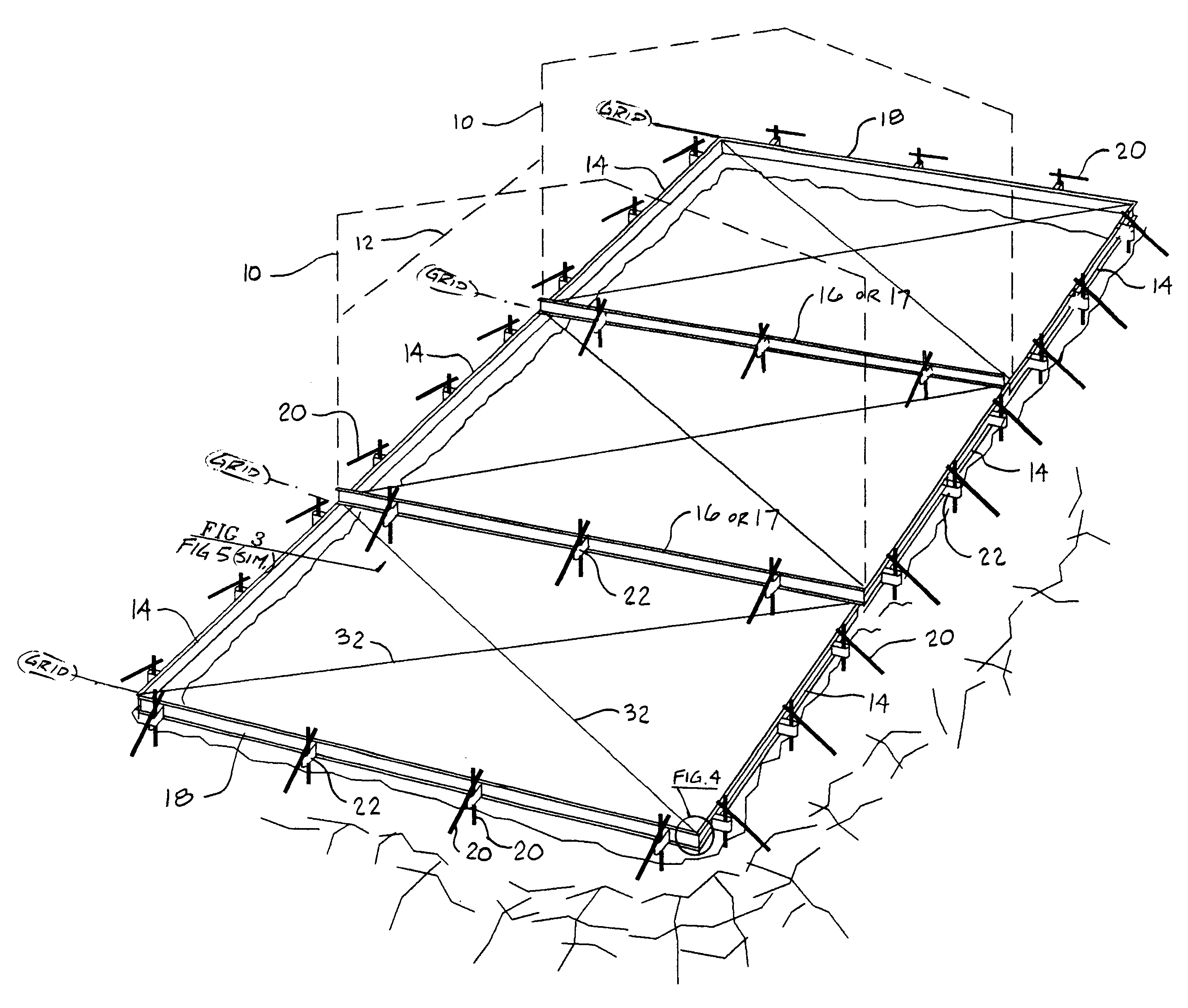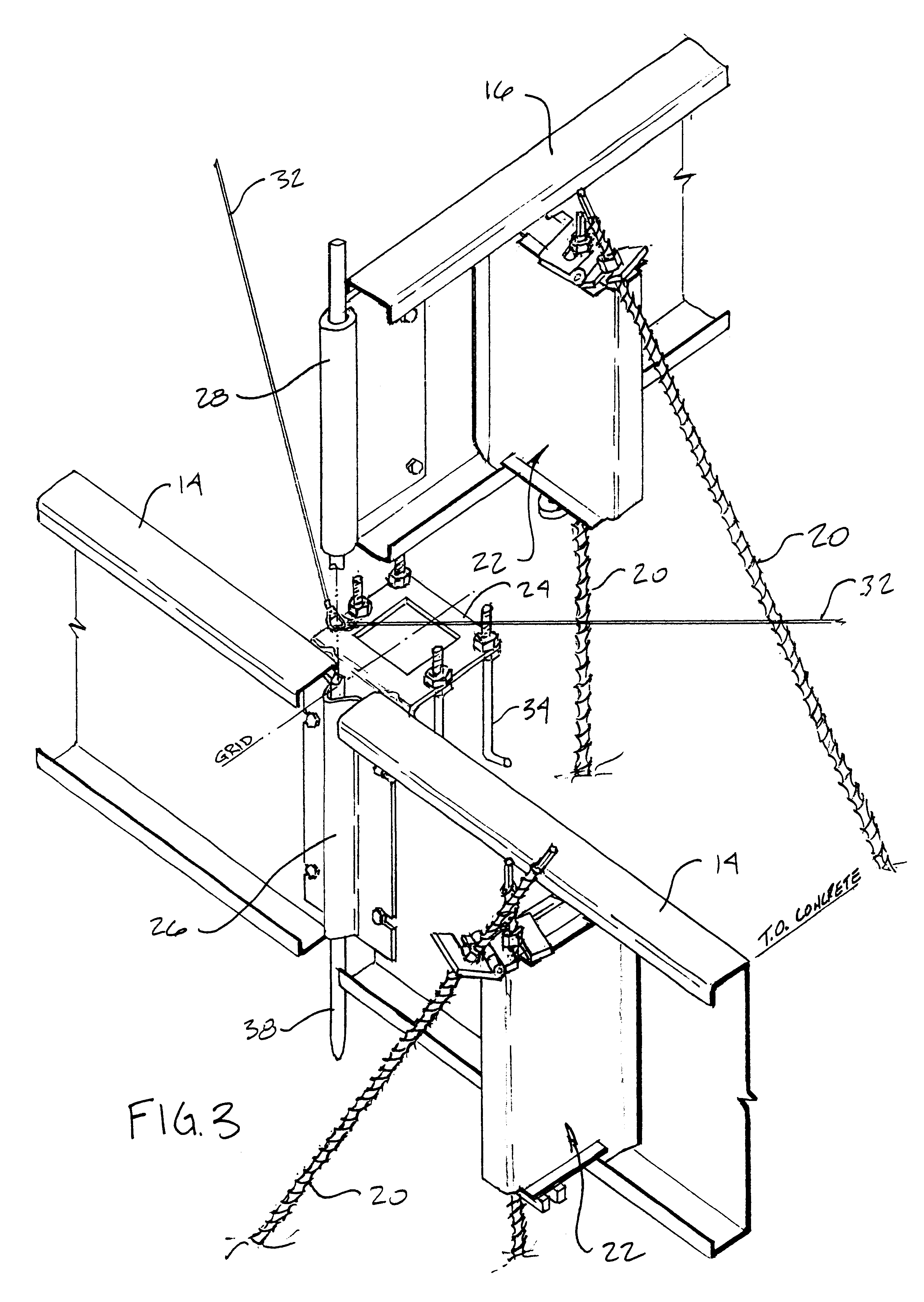Slab foundation construction fixture, particularly as adapts standard girts for pre-use as foundation forms
a technology for building fixtures and foundations, which is applied in the direction of foundation engineering, building repairs, auxiliary members of forms/shuttering/falseworks, etc., can solve the problems of limited commercial success of contemporary proprietary systems which form concrete-slab-on grades, inflexible, and high cost of proprietary systems
- Summary
- Abstract
- Description
- Claims
- Application Information
AI Technical Summary
Benefits of technology
Problems solved by technology
Method used
Image
Examples
Embodiment Construction
Beginning in the drawings, FIG. 1 shows a view of a form-set as was disclosed in this inventor's patent application Ser. No. 08 / 600,408, filed on Feb. 12, 1996 for CONCRETE SLAB FOUNDATION FORMING DEVICES. The difference in this particular form-set is that the forming members, as is, are subsequently utilized as wall girts between structural frames.
An example of the outline of a building frame 10 is shown to make clear this relationship, as a form / girt 14 is identical to the future wall girt located by a dashed line 12. The selfsame identical connections to form / girt 14 as are later used in the wall are also used in first deploying form / girt 14 as a form. The building outline is generally identical at its end walls, or end frames 1 as the case may be, as is illustrated in FIG. 1 on two interior grid lines.
A form 18 is parallel to the structural frames. Form 18 can subsequently be an end wall girt, or it can be longitudinal wall girt, commonly with length modification, or it can simp...
PUM
 Login to View More
Login to View More Abstract
Description
Claims
Application Information
 Login to View More
Login to View More - R&D
- Intellectual Property
- Life Sciences
- Materials
- Tech Scout
- Unparalleled Data Quality
- Higher Quality Content
- 60% Fewer Hallucinations
Browse by: Latest US Patents, China's latest patents, Technical Efficacy Thesaurus, Application Domain, Technology Topic, Popular Technical Reports.
© 2025 PatSnap. All rights reserved.Legal|Privacy policy|Modern Slavery Act Transparency Statement|Sitemap|About US| Contact US: help@patsnap.com



